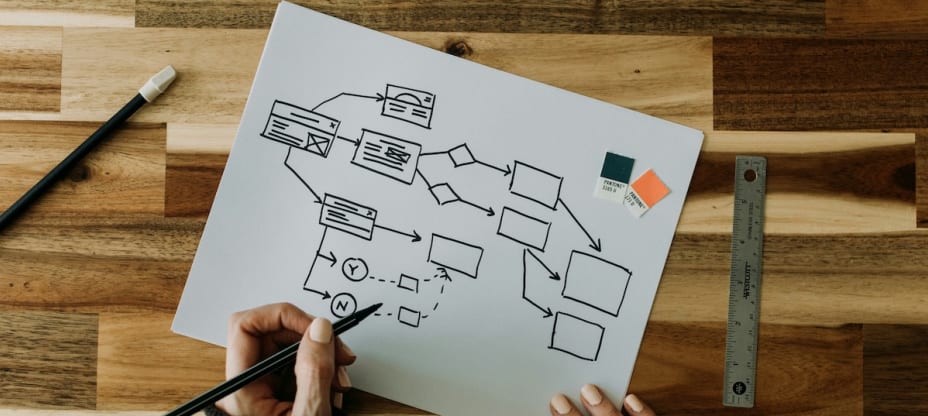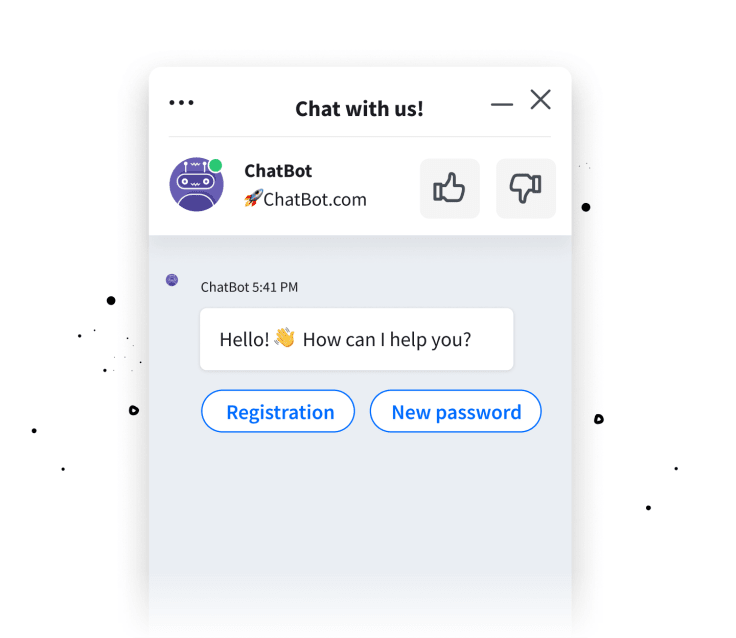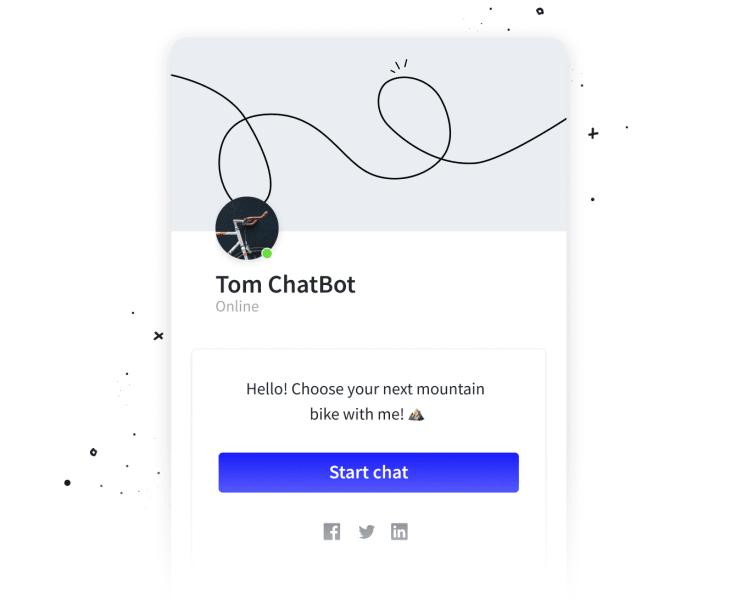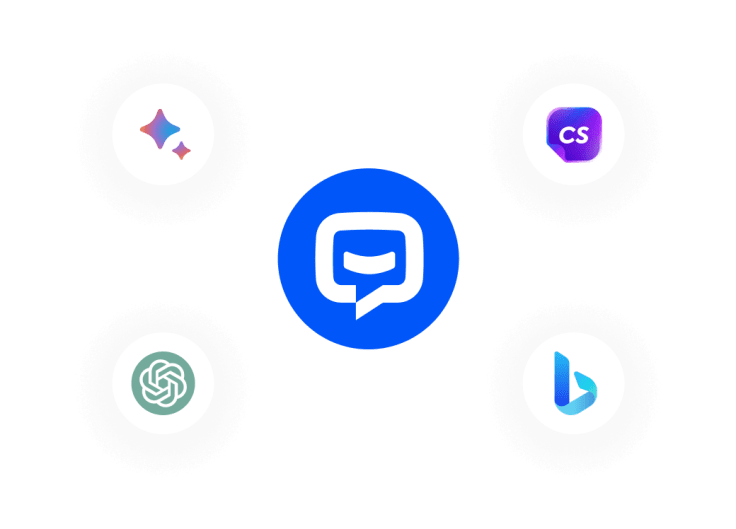Showing top 0 results 0 results found
Showing top 0 results 0 results found

Visit any website, and you are bound to see some form of automation introduced into its structure. This could be anything from an email intake form to a calendar announcing upcoming events.
However, one of the most potent forms is through chatbots. These powerful tools backed by artificial intelligence (AI) driven insights lead to natural language processing (NLP) and a conversational experience. Users get questions answered, help with products, and more to streamline interactions.
Part of integrating chatbot functionality into any platform is understanding user intent. Chatbots should always be built with AI intent and entities in mind that match up with the target audience using them most. Having progressive artificial intelligence that can decipher customer inquiries from intent recognition goes a long way to boosting everything from the knowledge base of a website to order tracking.
It wouldn’t make sense to have chatbot functionality for medical help on a travel website booking audio tours of New Orleans’ “most haunted graveyards.”
In this article, we’ll review how using a chatbot is improved when backed with customer intent and greater user query relevance.
What is chatbot intent?
Whenever you read “AI intent” or “chatbot intent,” don’t think of it from the tool's perspective. All AI intent does is related to the intent of the person using the chatbot. The customer intention of the prompt, message, question, or inquiry is directly related to the goal of the system-defined entities and generated results.
For example, suppose you have well-trained AI intent working with natural language processing and user feedback to streamline customer satisfaction with an ecommerce brand. In that case, it may work better when it knows customers are requesting tracking information, help with product identification or similar user intents.
The moment the intent-based chatbot can take this info and categorize it, the better that tool can deliver personalized and engaging responses. As more time passes, these chatbots can then be trained to improve overall customer relations, sales figures, and more from user feedback.
Start a free 14-day trial to see what our ChatBot can do.
Are there different types of intents and entities?
There are as many chatbot intents as your imagination. If you can dream it, you can find a way to use a tool like ChatBot for dragging and dropping a new sequence. This can then match a brand-new user intent based on your target audience’s needs.
However, before you learn how to map user interactions and different entities, it helps to understand the current four primary AI intents.
1. Navigational chatbot intent
The goal of navigational user intent is to drive the visitor through the website or platform they are exploring. Customer service chatbots should deliver the information most requested and required by the person asking the questions.
2. Informational chatbot intent
An information AI intent is just that – delivers information relative to the user query. Often, this is related to specific product details, service parameters, or additional information that may be harder to find otherwise.
3. Transactional chatbot intent
Again, the name of the intent recognition says it all. Transactional intent helps visitors purchase a product or service. The better the chatbot responds to user needs, the more sales you can count on processing.
4. Feedback chatbot intent
Feedback user intent is crucial to growing as an online business. You may want to collect user-generated content (UGC), like reviews or videos for promotional materials or opinions on improving a product or service.
There are more entities that chatbot intents can be put into, but these four should give you a basic understanding of what intents and entities work in the chatbot environment.

How do you classify chatbot intent?
Customer intent has little to do with you or your team and much more with your target audience. As the natural language processing system of your AI intent-enabled chatbot works, it begins to segment out relevant responses to any user query.
These messages, questions, and more are then categorized, denoting some type of request based on the volume of similar items from customers. As they are grouped, they become “intents” related to maybe booking an art party for kids compared to asking questions about what supplies are provided.
The whole point is to streamline your communication through the chatbot. As the chatbot intent classification improves, the way these tools respond becomes far more accurate to any customer's unique needs.
What are the benefits of chatbot intents and entities?
When properly segmented out, intents and entities offer a wealth of advantages for your online business. Here is where we should differentiate intents and entities themselves.
If the intent is the original intention of the user query, the entities are the modifiers used to reach the desired outcome.
Say a user query is based on booking a grooming appointment for a pet. That would be a transactional chatbot intent. However, if the message includes a date, time, and specific service requests, those would be the “entities” inside the intent for nailing down a precise service.
Either way, some of the benefits you will experience from intents and entities improving your chatbots include:
- Improved natural responses: When the chatbot understands the context of the user query, it can respond more naturally using natural language processing.
- Greater relevance: As the chatbot intent classification becomes more evident, the relevance of responses based on the user query grows – enhancing customer satisfaction.
- Increased efficiency: Chatbots are designed to learn. The more automated responses that are acquired, the less time having to intercede.
- Personalization: Knowing the user's context is just as important as the intent. To boost this interaction, chatbots can gather data about previous orders, behaviors, and experiences.
- Scalability: Chatbots leveraging intents and entities understand requests at a higher rate, leading to scalability whenever your online business expands or experiences a spike in demand.
These many benefits are fully available through modern tools like ChatBot. When you select a chatbot solution like ChatBot, you get an AI-backed platform that learns through chatbot intent classification and various entities used to boost future performance.
Examples of chatbot intents and entities
Still on the fence or needing clarification about intents and entities working hand in hand with chatbots? Don’t worry, you’re not alone. While it may take a while to see how these complement one another, seeing them in action by visiting the chatbot section of ChatBot will help you get some answers.
Think of entities as the “nouns” of the chatbot world. Here are some examples of chatbot intents and the entities used to boost them:
- Booking vacation: A user query is submitted with the intent of booking a vacation at a Mexican resort. The entities would be the dates of the stay, any unique amenities required, number of guests, etc.
- Scheduling doctor visits: If the AI intent surrounds getting a checkup for a hurt arm, the entities would be the date of service, the amount of pain you’re experiencing, or even which location or doctor is providing the service.
- Tracking ecommerce orders: While the chatbot intent is based on product delivery and transactions, the entities would be the specific order number, tracking code, or date of purchase.
- Learning product details: This is a common AI intent around information. A customer wants more data before purchasing, so the entities may be the object's color, size, weight, or taxes.
- Exploring FAQs: This example is a little more exoteric. Here, the building blocks of the intent are around information, but the entities would have to be keywords or nouns related to specific responses (how many apples in a bunch, etc.).
When you see how intents and entities work together, the possibilities of training a chatbot become exponential. Soon, you will have a wildly streamlined tool that allows your customers to be served around the clock as you eat, sleep, and expand your online business.
How to train chatbot intents
Training a chatbot is not an overwhelming task, as long as you have the right tools. Using a service like ChatBot includes a visual builder that allows you to drag and drop building blocks of user interactions to boost intents and entities.

In general, there is an essential pathway you want to travel to train your chatbot on intents and entities. They include:
Step 1. Define categories
Clear up what different intent categories will work best for your business. Do you run an ecommerce brand that needs FAQs, customer support, and product information readily available? Are you operating a princess dance party service for tweens in the Hollywood Hills that requires booking, informational, and feedback intents?
You want to tie the category of your AI intent to the direct needs of your target audience.
Step 2. Gather and mark goals
Just like riding a bike, you’ll begin to have training goals to get to the end of the street. Maybe you start "day one" by keeping your balance and "day two" by going three houses down.
Look at the data you collect from previous customer interactions. These will inform you of the different training goals you’ll need to adjust and how you can better address categories with specific insights.
Step 3. Train the model
Now that you have relevant information and goals and understand your desired categories, you can train the actual chatbot model.
In most cases, like that with ChatBot, this will happen organically through natural language processing and machine learning (ML). However, you can always use the no-code drag-and-drop building blocks to make manual changes if needed.
Step 4. Listen to feedback
User query feedback is the lifeblood of a quality chatbot. It informs you and your team of how the tool is being used and what changes need to be made.
Continually collect data on the customers’ experience with your chatbot intents. You’ll be able to weed through the opinions to enable and integrate new processes that boost everything from response times to potential sales.
Step 5. Continuously monitor
You must not stop monitoring your chatbot intents as time moves on. Remaining competitive requires constant evolution and adaptation. Check out your ChatBot dashboard or analytics, and you can detect and proactively decide if any changes need to be made.
Getting started with ChatBot
The entire process of chatbot intent classification and nailing down various intents and entities is much easier when you employ ChatBot. This is an AI-driven chatbot that learns over time through accurate and timely responses.
As a highly secured system, everything is housed inside ChatBot. There is no need for third-party integrations like OpenAI or Google Bard. That streamlines the entire service for faster response times and strengthens security, giving you better operational peace of mind.

When you add ChatBot to your website, Facebook Messenger, Shopify store, or many other platforms, you immediately get a boost in customer satisfaction. Now, you have a 24/7, 365-day-a-year support team ready and willing to answer questions, direct traffic, and inform customers of anything they request.
Learn more about adding the power of ChatBot to your online business today by enjoying a free 14-day trial. Sign up and experience all ChatBot has to offer.
Wrapping up
Chatbots are often viewed as confusing or complex additions to a website. However, with the right tools, they can be an invaluable resource that is easier to use than trying to navigate your email inbox.
Understanding and implementing the various chatbot intents and entities available significantly improves how well these tools work with your online business. Chatbot intent classification allows for pattern recognition and delivering highly relevant, engaging, and practical responses that your customers will appreciate.
When you engage a tool like ChatBot, you get an AI-driven solution to chatbot intents and entities. That means it learns as it goes, providing unending, secure, and fully scalable solutions that only boost your brand’s reputation and efficiency.
Sign up for ChatBot today and integrate chatbot intent and entities into your workflows.



